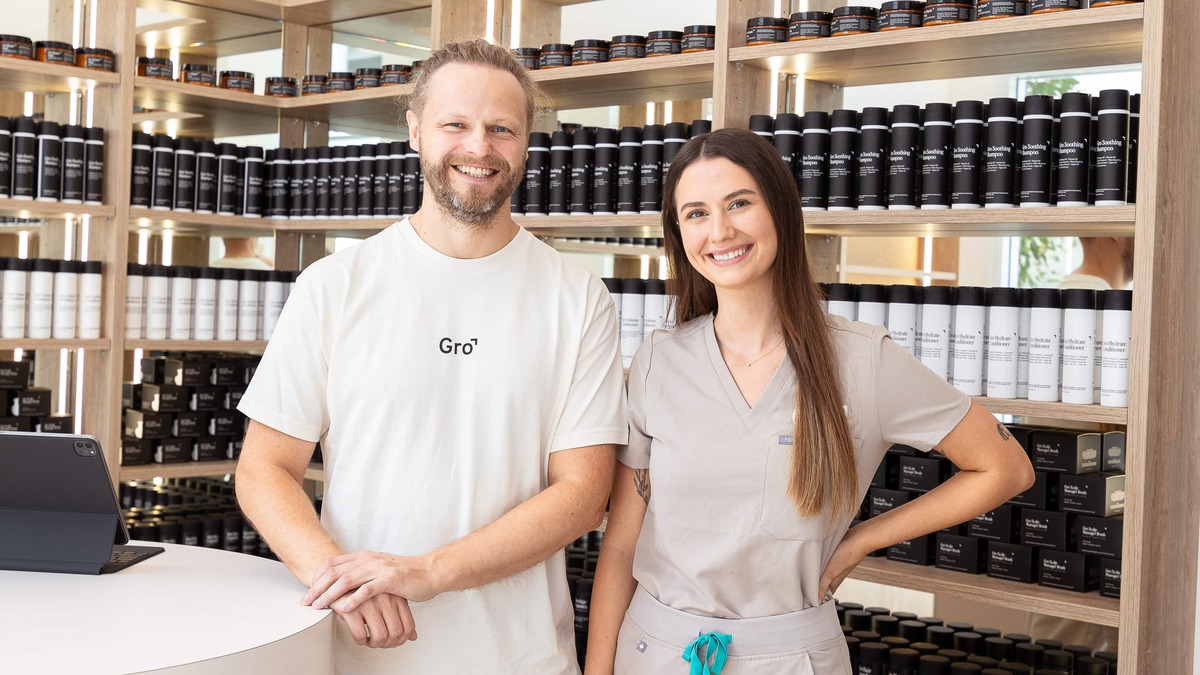Hair loss is a common concern affecting millions worldwide, impacting not just appearance but also self-esteem and confidence.
Traditionally, hair restoration methods were limited to rudimentary solutions that often provided unsatisfactory results. However, recent advancements in technology are transforming the field, delivering revolutionary results that are more effective, less invasive, and more reliable.
One company at the forefront of this transformation is Gro Clinics, which has leveraged cutting-edge technologies to change the face of hair restoration. As a testament to its success, the business currently conducts about 25,000 appointments annually and has achieved a remarkable 30% year-on-year growth for the past four years.
Says CEO Mikko Myllymaki, “This growth mirrors the broader hair restoration market, which is poised for exponential expansion.” Indeed, according to a report by Grand View Research, the global hair restoration market size was valued at USD 4.2 billion in 2020 and is expected to grow at a compound annual growth rate (CAGR) of 15.4% from 2021 to 2028.
“Modern hair restoration techniques have evolved significantly from the painful and often unreliable procedures of the past. Today, we are lucky to have access to several advanced technologies that offer improved outcomes with minimal downtime” continues Mikko.
These technologies include:
Follicular Unit Extraction (FUE): This minimally invasive technique allows for individual hair follicles to be extracted and then implanted into the desired area. The precision of FUE minimises scarring and maximises natural-looking results. Compared to the older strip harvesting method, FUE offers less discomfort and a quicker recovery period.
Direct Hair Implantation (DHI): An evolution of FUE, DHI involves the use of a specialised pen-like tool that allows for direct implantation of hair follicles without creating prior holes or slits in the scalp. This technique ensures better control over depth, direction, and angle, leading to a more natural appearance. Gro Clinics, for example, uses this advanced method to enhance the precision and effectiveness of their treatments.
Laser Therapy: Low-Level Laser Therapy (LLLT) has emerged as a non-invasive treatment option that uses light energy to stimulate hair follicles, encouraging growth and strengthening existing strands. This technique is often used in conjunction with other treatments to boost overall effectiveness.
Regenerative Medicine: Regenerative medicine, including stem cell therapy and platelet-rich plasma (PRP) treatment, employs the body’s own healing mechanisms to regrow hair. These methods involve isolating growth factors from your blood or fatty tissue and injecting them into the scalp. The objective is to rejuvenate dormant follicles and enhance the vitality of existing hair, offering a natural and less invasive alternative to surgical options.
These advancements in technology are not just about making hair restoration possible; they are about making it better, safer, and more accessible. The focus has shifted from merely covering bald spots to actually rejuvenating the scalp and promoting the growth of natural, healthy hair. Says Mikko, “The adoption of DHI, for instance, allows for more precise control over the implantation process, which translates to higher success rates and more satisfied patients.”
Gro Clinics’ robust performance is reflective of broader market trends. The global hair restoration market is on a growth trajectory, with forecasts projecting a compound annual growth rate (CAGR) of 15.4% from 2021 to 2028, underscoring the increasing demand for effective hair restoration solutions. This growth is driven by a combination of technological advancements, rising awareness about novel treatments, and the growing societal emphasis on aesthetics.
“Our holistic approach combines these advanced methods with a comprehensive treatment plan tailored to each individual’s needs, offering a personalised experience that enhances the overall effectiveness of the procedures”, continues Mikko.
Nutritional guidance, stress management strategies, and post-treatment care all form part of this multi-faceted approach, ensuring that patients receive comprehensive care that addresses the root causes of hair loss while optimising the conditions for hair growth.
By integrating regenerative medicine with lifestyle modifications such as dietary adjustments and stress management, patients are given a unique program that aims to provide sustainable results as well as enhance overall scalp health.
As the global hair restoration market continues to expand, driven by innovations and a growing emphasis on aesthetic well-being, patients can look forward to more advanced and comprehensive treatment options. Gro Clinics’ success story, characterised by impressive growth rates and high appointment volumes, exemplifies the potential of these advanced technologies to change lives. With continuous advancements and a commitment to holistic care, the future of hair restoration indeed looks promising.
Keep up to date with our stories on LinkedIn, Twitter, Facebook and Instagram.
Technological advancements are revolutionizing the industry, offering a wealth of new opportunities for businesses like yours. Tech, Technology Dynamic Business








